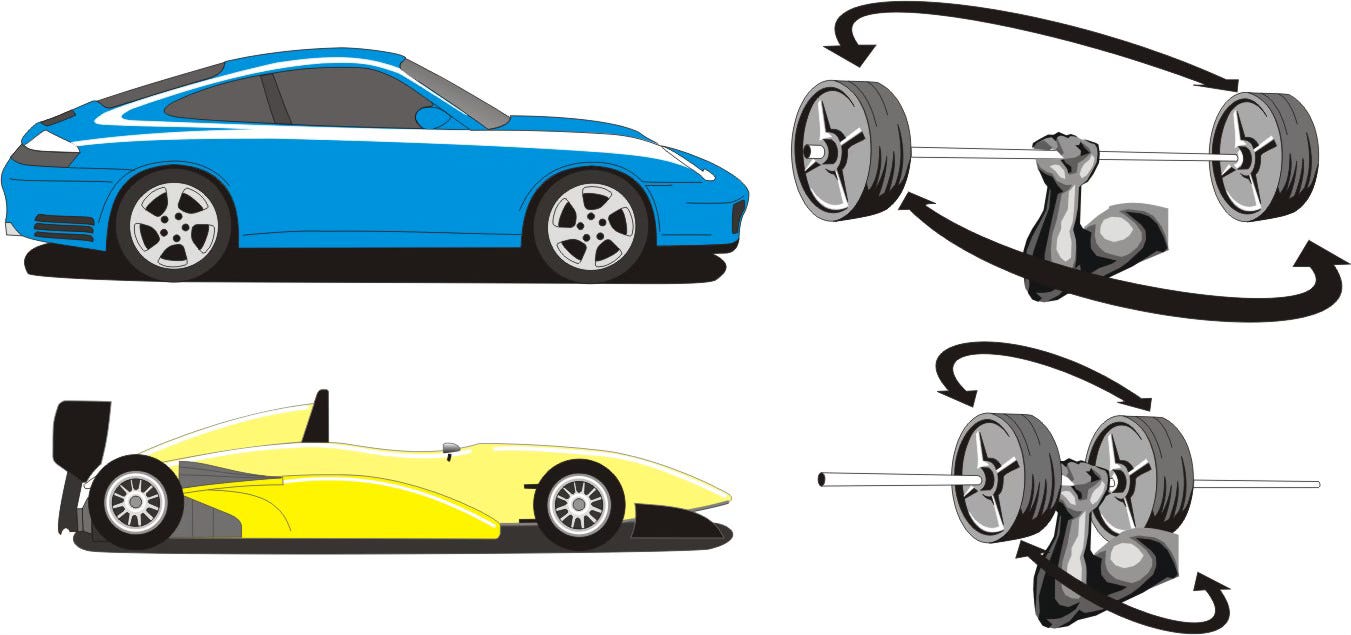Many years ago, smack in the middle of a seminar I was doing talking about handling, setup tuning, and vehicle dynamics, I thought I needed to lighten up the mood in the room. As I started to explain something that I’d learned in a Physics class in school, I said, “Your car’s handling depends on the polar bears in motion.”
Having caught everyone’s attention, I corrected myself by saying, “I mean, the polar moment of inertia.”
According to some AI tool I found online, “polar moment of inertia describes the distribution of the area of a body with respect to a point in the plane of the body.”
Huh?!
For us non-AI drivers, think of it as relating to where the majority of the mass, or weight, is located in your car. And more importantly to us, what you need to do to adapt to the weight distribution, managing how your car handles.
Cars with weight concentrated in the middle (with a lower polar moment of inertia) tend to change direction more quickly than cars with the weight hanging out the front or rear, which typically allows you to turn in exactly where you want; cars with weight out at the far ends of the chassis tend to require anticipating where it will eventually change direction.

Imagine a dumbbell with its weights at the very extreme ends of the bar, so they’re about three feet apart. Now imagine holding that dumbbell above your head, and turning it in one direction, back the other direction, and then to the other again. Each time you stop it from moving in one direction and make it go the other way, it takes a lot of effort.
But imagine if you were to move those weights in close to the center of the bar, just on either side of your hand. In fact, now the weights are only a matter of a few inches apart, with just your hand in between. Turn the bar from one direction to the other again. Notice how much less effort it takes to change direction? The same is true with a car. The more the mass of the car is centered in its middle, the easier it is to make it change direction, like from going straight to turning into a corner. That is why some cars require a slightly different technique or turn-in point—because their polar moment of inertia is different.
For example, if a relatively large percentage of your car’s weight is hanging way out the front (i.e., a front-wheel-drive car with the engine sitting far forward), you may have to turn in a little earlier to make up for its lack of crisp turn-in ability. If you’re driving a rear-engine car like a Porsche 911, that may change the exact point where you turn in, too.
As Sir Isaac Newton once said (and I’m paraphrasing since may Latin is non est bonum):
As drivers, we all have to live and work within Mr. Newton’s laws. I know for sure that you’re reacting to and managing your car’s weight—including how it’s distributed within your car’s platform. You may not be doing this consciously, but you are doing it. And yes, some drivers do this better than others.
Therefore, the higher a car’s polar moment of inertia, the earlier and more gently you need to turn in. There’s a phrase that should get you thinking!
Because there comes a time when you, the driver, need to adapt, and maybe even make up for a car that doesn’t do what you want. Yes, there’s a theoretically perfect line and method of turning into a corner, but we rarely drive perfect cars!
Practice being aware of how responsive your car is to changing direction…
Obviously, these are very minor, subtle feelings, so you need to really pay attention to what you feel.
Ultimately, practice adapting to the car’s handling characteristics by adjusting your brake release, your turn-in point and steering wheel rotation speed (how quickly and crisply you turn the steering wheel), and your throttle application. This is what it takes to master your car’s handling through those polar bears.
